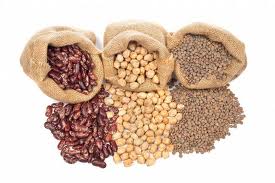Protein Supplement production in industrial sector – Part 8
Tuesday, January 24th, 2012 5:25:36 by Ahmed Tariq
Protein Supplement production in industrial sector – Part 8
Separation
Cell Flocculation
The efficiency of solid-liquid separation processes can be often improved by increasing the particle size (yeast cells) through flocculation prior to centrifuge separator and also it contribute to reduce the overall manufacturing cost. The reason is the
rate of sedimentation of spherical particles suspended in a fluid is proportional to the square of particle diameter (Stokes law).
Various synthetic polymeric flocculants is used commercially for flocculation of yeast suspensions. Polymeric flocculants can be added to lead to an increase in the average particle size [Wickramasinghe, 2005]. Electrolytes, acids and bases, natural polymers
(e.g. chitosan) and synthetic polymers have been used to promote flocculation of the biomass.
As the most effective flocculants, cationic polymeric can be obtained from Cytec Industries (Stamford, CT), which are successful in flocculating yeast cell in a fermentation broth. Flocculent chosen must be non-toxic for the flocculation of yeast cell because
the product is to be sold for human consumption.
Flocculation of yeast cells leads to an increase in the average particle diameter and it also leads to a broadening of the particle size distribution and then a steady state floc size distribution can be got.
From the experimental results for flocculation of yeast cells [Wickramasinghe, 2005], it indicates the volume average floc diameter increases and reaches a maximum and then decreases to the steady state value. In solution, yeast cells form small self-aggregates,
so that the average particle size for unflocculated yeast suspensions are about 30 µm.
Therefore, the average particle sizes increased to 30-70µm after flocculation with Cysep 4052 flocculant [Jin-Sung, 2001]. For flocculation to occur, collisions are essential between particles. After adding the flocculant, the suspension was stirring in
order to ensure a mix well with the flocculant added and also to ensure a high collision frequency between yeast cells and therefore rapid floc growth.
Flocculant and medium can be mixed via an in-line mixer prior to feeding into the centrifuge separator. As a result, the entire medium is subject to the same mixing regime with the flocculant and any period of inhomogenity is kept to a minimum, however,
mixing conditions during flocculation affect the degree of flocculation.
The level of turbulence during flocculation can have a large effect on the degree of flocculation. Low shear stresses lead to poor flocculation as high shear stresses lead to floc breakup. During continuous centrifugation, flocs are subjected to high shear
forces as they are pumped into the separation chamber. After pumping, flocs may break up into smaller flocs.
So it is important effective flocculation as a pretreatment to the continuous centrifugal separation of whole cells must produce flocs with high mechanical strength. Synthetic polymeric flocculant produce stronger flocs than inorganic coagulants by virtue
of the fact that the polymer can bridge several particles at once (Kim, 1988).
The addition of anionic polymers to the medium prior to flocculation by the cationic polyelectrolyte chitosan can increase the resilience of the flocs [Weir, 1994]. The effect of chitosan is to flocculate a suspension of yeast in a complex medium is dependent
upon the mode of addition of the flocculant to the suspension.
Continued in part 9
Tags: 2011, 2012, Industrial, Jan Dawson, lahore, Nokia Developer Website, Nokia s new Lumia 900, production, Report, researchShort URL: https://www.newspakistan.pk/?p=10331

















